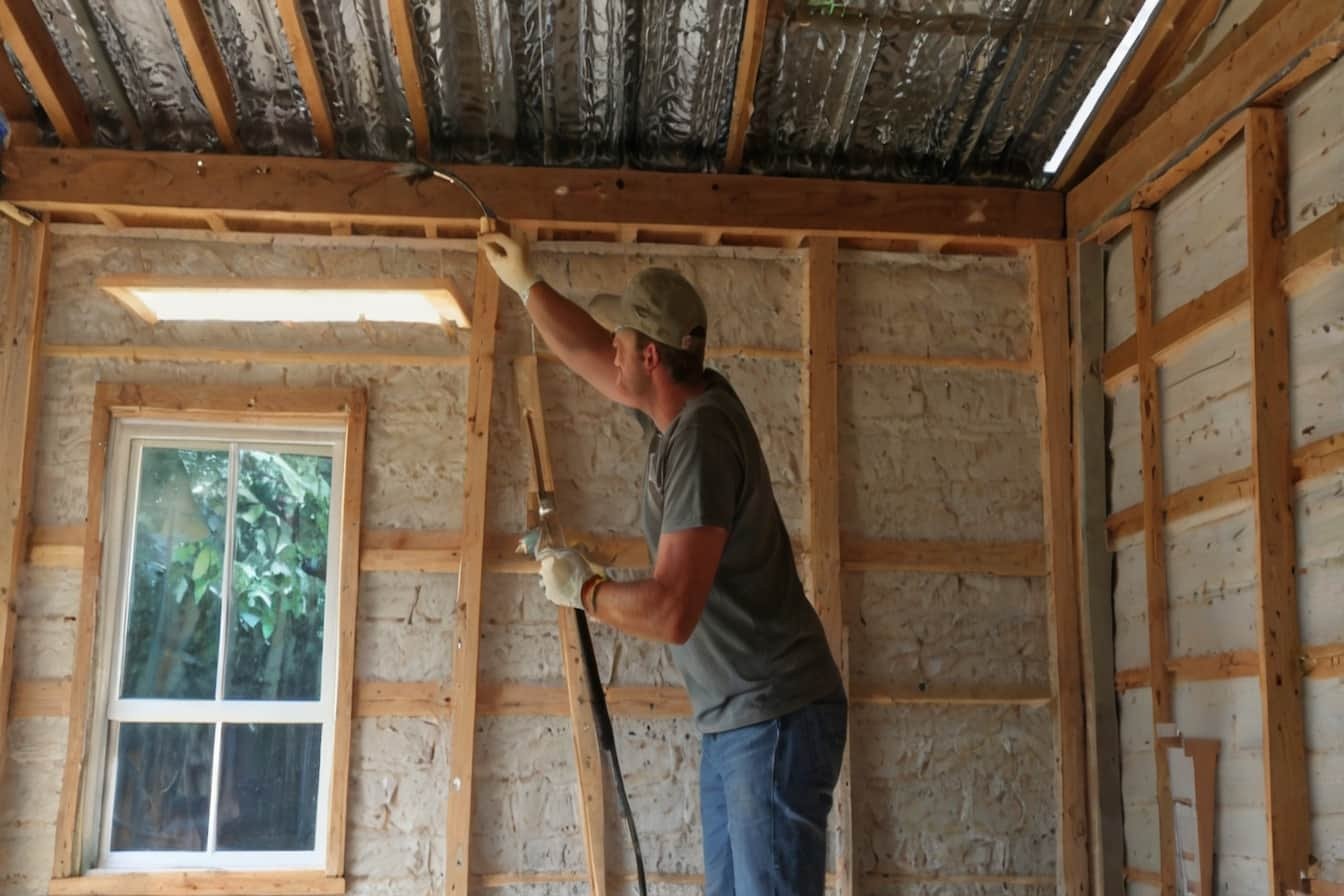Is it good to paint the inside of a shed? Painting the inside of a shed is more than just an aesthetic upgrade; it’s a practical way to protect your investment and enhance the shed’s functionality.
Whether you use your shed for storage, as a workshop, or even as garden retreat, a fresh coat of paint can make significant difference.
In this comprehensive guide, we’ll walk you through everything you need to know about painting a shed, from preparation to the final touches.
Why Should You Paint the Inside of a Shed
Painting the inside of a shed offers several benefits beyond just improving its appearance. Here are some compelling reasons why you should consider this project:
Safety Purposes: Paint acts as barrier against moisture, which can prevent mold, mildew, and rot. This is particularly important for wooden sheds.
Durability: A painted surface is easier to clean and maintain, which can extend the life of your shed.
Improved Lighting: Lighter colors can reflect light, making the interior brighter and more pleasant to work in.
Aesthetic Appeal: A well-painted shed interior looks more inviting, which is beneficial if you use the space as workshop or retreat.
Materials and Tools Needed
Before you start painting the inside of your shed, gather all necessary materials and tools to ensure a smooth process:
Paint: Choose paint suitable for your shed’s material (wood, metal, or plastic).
Primer: Essential for wood and metal surfaces to ensure the paint adheres well.
Paintbrushes/Rollers: Various sizes to cover different areas effectively.
Painter’s Tape: To protect areas you don’t want to paint.
Drop Cloths: To protect the floor and any items left in the shed.
Sandpaper: For smoothing surfaces before painting.
Cleaning Supplies: A vacuum, cloths, and mild detergent for cleaning surfaces.
Protective Gear: Gloves, goggles, and a mask for safety.
How to Paint the Inside of a Shed: Preparation Steps to Paint
Proper preparation is crucial for successful painting project. Here’s how to get started:
Clear the Shed: Remove all items from the shed to ensure you have easy access to all surfaces.
Clean the Surfaces: Dust and dirt can prevent paint from sticking properly. Use vacuum and damp cloth with mild detergent to clean all surfaces.
Repair Any Damage: Fill holes or cracks with appropriate fillers and sand them smooth once dried.
Sand the Surfaces: Lightly sand walls, ceiling, and other surfaces to ensure they are smooth and to help the primer and paint adhere better.
Wipe Down: After sanding, wipe down the surfaces with a damp cloth to remove dust.
Choosing the Right Paint
Selecting the right paint is crucial for longevity and appearance of your shed’s interior. Consider the following factors:
Material Compatibility: Ensure the paint is suitable for shed’s material (wood, metal, or plastic).
Durability: Opt for high-quality paint that can withstand the conditions inside a shed.
Finish: For interior surfaces, a semi-gloss or satin finish is usually best as they are easier to clean.
When selecting paint, you might wonder, what is the best paint for an outdoor shed? For exterior surfaces, choose weather-resistant paint specifically formulated for outdoor use.
For the interior, standard interior paint will suffice, but ensure it has good coverage and durability.
Priming the Surfaces
Priming is crucial step that should not be skipped, especially for wood and metal surfaces. Primer helps the paint adhere better and provides uniform base for the topcoat. Here’s how to apply primer effectively:
Choose the Right Primer: Use primer suitable for your shed’s material.
Apply Evenly: Use a brush for edges and corners and roller for larger areas.
Drying Time: Allow the primer to dry completely according to manufacturer’s instructions before applying the topcoat.
Painting Techniques
Now that your surfaces are prepped and primed, it’s time to paint. Follow these steps for professional finish:
First Coat: Apply the first coat of paint using roller for large areas and a brush for edges and corners. Start from the top (ceiling) and work your way down (walls), ensuring even coverage.
Drying Time: Let the first coat dry completely.
Second Coat: Apply a second coat for better coverage and more vibrant finish. Follow the same method as the first coat.
Additional Coats: If needed, apply additional coats until you achieve the desired finish, allowing proper drying time between coats.
For more efficient method, consider spray painting the inside of a shed. This technique can save time and provide smooth, even finish.
However, it requires more preparation to protect areas you don’t want to be painted and adequate ventilation to avoid inhaling fumes.
Painting the Shed Floor and Underside
When it comes to painting the shed floor and the underside, there are some additional considerations:
Should I Paint the Floor of My Shed? Painting the floor can protect it from wear and tear, spills, and moisture. Use a durable floor paint designed for high traffic and easy cleaning.
Should I Paint the Underside of My Shed Floor? Painting the underside can provide additional protection against moisture and pests, especially if the shed is raised off the ground. Use exterior-grade paint for this purpose.
Final Actions for Painting
Once painting is complete, follow these finishing touches to ensure professional result:
Remove Painter’s Tape: Carefully remove the painter’s tape while the paint is still slightly wet to avoid peeling.
Clean Up: Clean brushes and rollers immediately after use. Dispose of any materials properly.
Reorganize: Once the paint is completely dry, you can move items back into the shed.
Common Mistakes to Avoid
To ensure your painting project goes smoothly, be aware of these common mistakes:
Skipping Primer: Always use primer to ensure the paint adheres well and lasts longer.
Insufficient Preparation: Properly clean and sand surfaces before painting.
Rushing: Allow adequate drying time between coats to avoid peeling and uneven coverage.
Ignoring Ventilation: Ensure good ventilation to avoid inhaling fumes and to help the paint dry faster.
Option of Paint Shed Bathgate
For those in need of high-quality paint and supplies, consider visiting The Paint Shed Bathgate This store offers wide range of paints and accessories, making it convenient one-stop shop for all your painting needs. Their knowledgeable staff can help you select the best products for your specific project.
Wrap Up
Painting the inside of a shed is a worthwhile project that enhances both appearance and functionality of the space.
By following the steps outlined in this Freedomz Storage’s guide, you can achieve professional-looking finish that will protect and beautify your shed for years to come.
If you take the above guidelines carefully, you will be rewarded with space that is not only more appealing but also more protected from the elements. Happy painting!
FAQs
Q: Why should I consider painting the interior of my shed?
A: Painting the interior of your shed protects against moisture, boosts longevity, improves lighting, and adds aesthetic appeal, making the room more useful and welcoming.
Q: What materials and tools will I need to paint the interior of a shed?
A: You will need paint, primer, paintbrushes, rollers, painter’s tape, drop cloths, sandpaper, cleaning materials, and safety equipment such as gloves, goggles, and a mask.
Q: How should I prepare the shed for painting?
A: Before applying primer and paint, empty the shed, clean all surfaces, fix any damage, sand the surfaces, and wipe them down to eliminate dust.
Q: Which sort of paint should I use on the inside of my shed?
A: Select a paint appropriate for the shed’s material (wood, metal, or plastic). For interior surfaces, a semi-gloss or satin finish is preferred because to its longevity and simplicity of cleaning.
Q: Should I use primer before painting?
A: Yes, a primer is required, particularly for wood and metal surfaces. It improves paint adherence and creates a homogeneous basis for the topcoat.
Q: How should I apply the paint for optimal results?
A: Apply the first layer of paint with roller for larger areas and brush for edges and corners. Allow it to completely dry before adding additional coats as needed to achieve even coverage.

